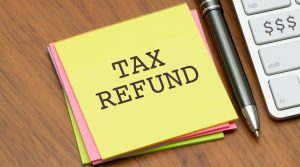If you’ve ever filed your taxes and waited anxiously for your refund to arrive, you’re not alone. Across Canada, many individuals rely on their tax refunds to help manage bills, pay off debts, or build savings.
Naturally, one of the most common questions during tax season is, “How long does it take to get your tax return?” The answer depends on several factors, such as how you file, whether you’re enrolled in direct deposit, the time of year you submit your return, and whether there are any errors in your paperwork.
Understanding the refund process is key to avoiding delays and frustration. By knowing what to expect and how to check your return’s status, you’ll be better prepared for tax season. In this article, we’ll break down CRA processing timelines, causes of delay, and tips for receiving your refund as quickly as possible.
Why Does the CRA Take Time to Process Tax Returns?

When tax season opens, the CRA doesn’t start reviewing returns immediately. Typically, the CRA begins processing income tax returns around the middle of February. If you submit your return before this time, it will be held in the queue until official processing begins.
The CRA handles millions of returns each year. While automated systems review most electronic returns, a percentage of them are flagged for manual review. These reviews help detect inconsistencies or missing information, which may require follow-up from the taxpayer.
Several variables affect the CRA’s processing timeline, including:
- The total volume of returns being received
- Whether you filed electronically or by paper
- The presence of any errors or missing documents in your submission
Once your return has been reviewed and approved, your refund will be issued. The time between filing and refund depends on how your return was submitted, which leads to the next section. Understanding these processes can help set your expectations and encourage more accurate filing.
How Fast Can You Get Your Tax Refund with NETFILE?
If you’re looking to receive your tax refund as quickly as possible, filing electronically using NETFILE is the most efficient option. NETFILE allows you to submit your tax return through certified software that sends your information directly to the CRA’s system.
Returns submitted through NETFILE typically take between 8 to 10 business days to process if you are registered for direct deposit. Direct deposit allows the CRA to transfer funds directly into your bank account, avoiding the delays that come with mailing paper cheques.
To maximize the speed of your refund:
- Ensure your personal information is accurate
- File after the CRA’s processing start date
- Choose direct deposit instead of receiving a mailed cheque
Once processed, you’ll receive a notification via email or through your CRA My Account. If there are no errors, your funds should arrive promptly. Filing with NETFILE offers both convenience and speed, making it the preferred method for many Canadians.
What If You Filed a Paper Return How Long Does That Take?
Paper returns take considerably longer to process than electronic filings. This is primarily due to manual handling. When a paper return arrives at the CRA, it must be physically opened, scanned, and reviewed by a staff member. As a result, processing times increase, especially during peak filing periods.
If you submit a paper return before April 15, you can typically expect your refund within 4 to 6 weeks. Returns filed after April 15 may take 6 to 8 weeks or more to be processed. This delay increases if the CRA encounters any errors, missing slips, or unclear handwriting.
Paper returns may be necessary in specific cases, but when possible, the CRA recommends electronic filing to ensure quicker turnaround. Understanding the timeline for paper returns helps manage expectations and encourages more efficient filing methods for future tax years.
What Factors Can Delay Your Tax Refund?

Even if you file your return correctly and on time, several issues can slow down the refund process. Understanding these potential setbacks can help you avoid them and reduce your waiting time.
What Are the Common Causes for Refund Delays?
- Errors in your return, such as typos, incorrect figures, or misfiled deductions
- Missing documentation, such as unsubmitted T4 slips or receipts for claimed credits
- Outstanding balances, where refunds are applied to unpaid tax bills or government debts
- Manual CRA reviews, often triggered by large claims, significant changes from previous years, or inconsistencies in income
- Operational disruptions, such as high filing volume or staff shortages due to strikes or other national events
If your return is selected for a manual review, the CRA may contact you for more details or supporting documents. Until this information is received and reviewed, your refund will be put on hold. Being proactive with your filing can reduce the likelihood of encountering these delays.
How Can You Check the Status of Your Tax Return?
After submitting your return, you can check its status through various methods. The most reliable is the CRA’s My Account service, which provides real-time updates and allows you to track the progress of your tax return.
To use CRA My Account, you’ll need to log in with your CRA user ID or a sign-in partner, such as your financial institution. Once inside, you can view whether your return has been received, is under review, or has been processed. You can also see if a refund has been issued and when it will arrive.
What Are Some Other Ways to Check Your Status?
- Tax Information Phone Service (TIPS), which offers automated updates
- Calling the CRA directly at 1-800-959-8281 for more complex inquiries
When contacting the CRA, have your SIN, date of birth, and the total income from your most recent return available for identity verification. Monitoring your status ensures you’re aware of any issues early on.
Do You Get Interest if Your Refund Is Delayed?
In some situations, the CRA will pay compound daily interest on delayed refunds. However, this only applies when delays occur beyond standard processing timelines and are not caused by errors in your return.
Interest on your refund begins on the latest of the following:
- 30 days after the balance-due date (usually April 30)
- 30 days after you filed your return
- The day after you overpaid your taxes
If your return is delayed due to a CRA backlog or system error, you may receive additional funds in the form of interest. However, if your delay was caused by incomplete information or incorrect filing, you typically won’t be eligible for this interest.
Interest is automatically included in your refund and does not need to be requested separately. You can confirm any added interest when reviewing your Notice of Assessment. Understanding when interest applies can ease concerns about prolonged delays.
How Do You Set Up Direct Deposit with CRA?

Setting up direct deposit ensures faster access to your refund and other government payments. As of March 2025, the CRA no longer accepts direct deposit enrollment or changes via phone or EFILE.
To set up or update your direct deposit:
- Log into your CRA My Account and navigate to the direct deposit section
- Use your online banking platform, which may include a CRA enrolment option
- Complete and mail the Canada Direct Deposit Enrolment Form if you prefer paper submission
Direct deposit applies not only to tax refunds but also to GST/HST credits, Canada Child Benefits, and other government disbursements. Once enrolled, your refund will be deposited directly into your bank account, usually within days of processing.
This avoids the risk of delays from lost cheques or postal issues. Using direct deposit is both secure and efficient, making it a preferred choice for millions of Canadians.
What Can You Do if Your Refund Is Taking Too Long?
If you haven’t received your refund within the typical timeline 10 business days for NETFILE returns or 8 weeks for paper filings, it may be time to follow up.
Start by checking your CRA My Account to verify the status of your return. Look for messages indicating a review or missing documentation. Ensure your banking information is correct if you’re expecting a direct deposit.
If no update is available and you suspect a delay:
- Call the CRA to speak with a representative
- Have your tax return summary and personal details ready for verification
- Inquire whether additional information or documentation is required
In more complex situations, such as audits or self-employment income, consider consulting a tax professional who can liaise with the CRA on your behalf. Being proactive helps resolve delays and ensures your refund is issued as soon as possible.
How Can You Ensure Faster Tax Refunds in the Future?

To receive your tax refund quickly in future years, it’s essential to follow best practices for filing. Many common delays can be avoided with a few simple habits.
How Can You Speed Up Your Refund?
- File your taxes early and electronically through a CRA-approved platform
- Use Auto-fill My Return, a CRA feature that populates your return with pre-verified data from employers and financial institutions
- Double-check your return for errors, missing slips, or outdated personal information
- Enroll in direct deposit and update your bank details regularly
These steps significantly reduce the risk of delays and help you stay on top of your tax obligations year after year. Filing early and accurately means more peace of mind and quicker access to your funds.
Average Refund Timelines by Filing Method
| Filing Method | Refund Method | Estimated Time to Receive Refund |
| NETFILE + Direct Deposit | Direct Deposit | 8 to 10 business days |
| NETFILE + Mailed Cheque | Cheque by Mail | 3 to 5 weeks |
| Paper Return + Direct Deposit | Direct Deposit | 6 to 8 weeks |
| Paper Return + Mailed Cheque | Cheque by Mail | Up to 10 weeks |
Conclusion
So, how long does it take to get your tax return in Canada? The answer depends on how and when you file. Submitting your return electronically using NETFILE and enrolling in direct deposit will usually result in your refund being issued within 8 to 10 business days. However, if you file a paper return or if there are issues with your documentation, it could take several weeks or more.
By understanding the CRA’s timelines and requirements, you can take steps to avoid unnecessary delays. Filing early, double-checking for errors, and using CRA-approved tools like Auto-fill My Return can all contribute to a smoother tax season.
When issues arise, knowing how to follow up with the CRA helps resolve problems quickly and efficiently. Being proactive about your tax filing process gives you more control and helps you receive your refund with fewer delays each year.
FAQs
What is the CRA’s refund timeline for 2025?
Most NETFILE returns with direct deposit are processed in 8 to 10 business days. Paper returns can take up to 10 weeks, depending on when they’re filed and whether all documents are complete.
Can errors in your return slow down the refund process?
Yes. Typos, incorrect SINs, and missing slips are common issues that trigger manual reviews and delay refunds.
Is direct deposit mandatory for CRA tax refunds?
While not mandatory, it is strongly encouraged by the CRA. Most payments are now processed via direct deposit, and mailed cheques are being phased out.
How can I track my uncashed tax refund cheques?
You can check for uncashed cheques through CRA My Account and request reissued payments if needed.
What happens if I forgot to include a T4 or T5?
The CRA may delay or reassess your return. Use Auto-fill My Return to avoid missing information.
Does filing late affect how long it takes to get a refund?
Yes. Filing after April 30 or during the CRA’s peak processing period often results in extended wait times.
Can the CRA withhold my refund for unpaid debts?
Yes. The CRA may apply your refund toward unpaid taxes, student loans, or provincial debts like child support.




